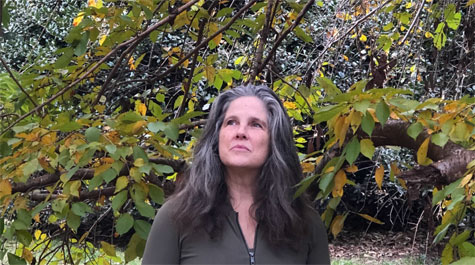W&M professor’s research offers reflections for family rituals in a digital world
Digital technology can pervade gatherings, and families may best manage the thorny issue during the holidays by discussing it beforehand and reaching a consensus, according to a William & Mary sociology professor.
Kathleen Jenkins, professor and chair of the Department of Sociology and director of the Institute for Pilgrimage Studies, studies families and ritual and has researched families who walk pilgrimage routes together.
“We don’t think about technology as much as we need to in terms of digital devices,” Jenkins said. “And when you’re trying to connect with family, those relationships and the rituals you experience with each other can be enhanced through technology, but they can also be weakened.”
For her current ethnographic project, Jenkins researched parents and their young adult children walking the spiritual pilgrimage route of the Camino de Santiago in Spain. She interviewed 78 people from 41 families, and spent time walking Camino paths and in Santiago talking informally with pilgrims and families traveling together.
Jenkins and Ken Chih-Yan Sun, professor of sociology at Villanova University, explored family use of technology in the paper “Digital Strategies for Building Spiritual Intimacy: Families on a ‘Wired Camino,’” published in the journal Qualitative Sociology in July.
Use of digital technology has become common along the Camino route, and that poses questions of how to integrate and limit its use to maximize the experience for all involved, Jenkins said. Much of this information can be applied to family time during holiday celebrations and rituals, religious ceremonies and special meals.
“It is important to think about reflection regarding technology use and social relationships,” Jenkins said.
In an effort to create space where communal spiritual practices could flourish, many families in the Camino study worked together to discipline their use of technology. Examples included agreeing to set aside tech time and tech-free walking time, and designating one family member each day to use a digital device for essential communication to free up everybody else in the group.
“Sometimes people didn’t achieve that,” Jenkins said. “It’s very difficult to do. Reflecting on technology together as a family, in any relationship, is not easy because we often think of it as an individual thing. People can be very attached to their phones and social media accounts.”
Jenkins referenced the work of Nancy Frey, an anthropologist and pilgrim guide in Spain who recently visited W&M as a COLL 300 visitor. Frey’s website offers guidance for focusing on being present while walking, which Jenkins recommended as useful for families who have holiday rituals of walking together perhaps before or after eating a big meal.
A group walk is just one example.
“Rituals are important because they mark beliefs and ideals of a society or a group,” Jenkins said. “So sociologically it can be very powerful to have a kind of ritual where you’re engaging and going out looking at nature, or engaging each other in some other creative task or some other kind of ritual task such as cooking together.”
Family members reflecting together on the role of digital technology in gatherings raises several questions that can be thought about and decided ahead of time, Jenkins said.
One question is where will digital devices be located during holiday meals or other rituals. Families might agree on either having them present or put away for all or part of the activity.
“In contemporary society, many individuals and families want to capture their experiences and post them online,” Jenkins said. “So it’s worth just reflecting on what that process is. Do we feel remorse if we fail to capture an important photo?
“Do we feel an obligation to represent our ritual lives for significant others to share? Given that feeling of responsibility, how can families work together to balance experiencing and capturing digital memories?”
Positive uses of technology include bringing those not present into the event virtually, creating digital memories through writing and photographs that might be shared with family and using online programs for spiritual practices.
It’s important to focus on connections and sharing experiences while being mindful about getting caught up in too much technology, Jenkins added.
“Regardless of the intended use of the devices, shared reflection on how much time is spent looking down at the screen and looking up to see nature and to see each other, is perhaps one of the most important things those in relationships can do,” Jenkins said. “It is not simply a matter of whether technology and digital devices are good or bad for relationships, but how we use them and how we might take control of them, in ways that enhance connection and understanding.”
















